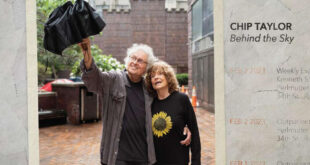Italian string quartet Quartetto di Cremona closed out its North American tour with a sold-out concert at the Frick Collection on 11 November. The invigorating program focused on Italian composers from the 18th century right through to modern times.
Formed in 2000, the quartet has developed a tight, fluid ensemble sound as comfortable with the avant-garde as with Boccherini. They opened with the latter’s String Quartet Op. 2 No. 6. The assertive accents, emotional dynamics, and overall good cheer of the first movement; the placid “Largo” with its fluid cello lines; and the stately finale all shone with the warm, woody, almost animal sound of the historic instruments these musicians have the good fortune to play. For the past year they have been loving caretakers of a quartet of Stradivarius instruments once owned by Paganini. It’s a fitting match – the Quartetto di Cremona’s four musicians are from Genoa, hometown of Paganini, and they are also honorary citizens of their namesake city, Stradivari’s hometown.
A leap to the late 20th century took us to Lorenzo Ferrero’s Tempo di Quartetto. Its contemplative first movement is layered with slightly unexpected harmonies, contrasting whole tone and semitone lines, and melodic quirks. The musicians attacked the salty, rhythmic “Allegro,” a kind of angry waltz, with utter conviction. They made the third movement, designated “Slow Rock,” a romantic ride tilted with occasional blue notes.
Equally appealing was the “Italian Serenade” of Hugo Wolf, the lone non-Italian composer on the program. A countryside romp opening with fast triplets, it has moments of peril and stormy weather that resolve into a delicate dance of pizzicatos and syncopations. The varied colorations the musicians drew from their instruments benefited from the excellent acoustics of the mansion-museum’s Music Room.
So did Fabio Vacchi’s “Movimento di Quartetto,” an avant-garde late-20th-century work that recalled abstract expressionism (a style of art you won’t find on this museum’s walls). Muted, misty dissonant chords erupted into explosive tutti outbursts, the musicians wielding their skill and conviction in an expression of great artistry.
They devoted the second half to music by composers best known for opera. Puccini’s 1890 “Crisantemi” came across as romantically Italian with moments of Beethovenian angst. It served as an appetizer for Verdi’s rich 1903 Quartet in E minor. The musicians gave the piece’s melodic first movement, with its fugue-like passages, operatic momentum. They went on to infuse the ballet-like second with lush feeling, their instruments sounding especially beautiful in rhythmic unison passages.
Through years of playing together the Quartetto di Cremona has developed the feel of a single voice, and remarkably so. But individual parts shine too, as with the charming cello melody in the trio section of the Verdi’s fiery third movement. More fireworks followed in the “Scherzo Fuga” finale. The audience had the musicians back for two encores.
The Quartetto di Cremona has a busy concert schedule. They are in Europe for the remainder of this year. I hope they cross the Atlantic again soon. You can find several of the works on this concert program on their album Italian Journey. They have also recorded a complete Beethoven cycle.
The Frick Collection presents many fine artists in its long-running concert series. This was my first visit to the Music Room at the Frick. It won’t be my last.
 Blogcritics The critical lens on today's culture & entertainment
Blogcritics The critical lens on today's culture & entertainment




